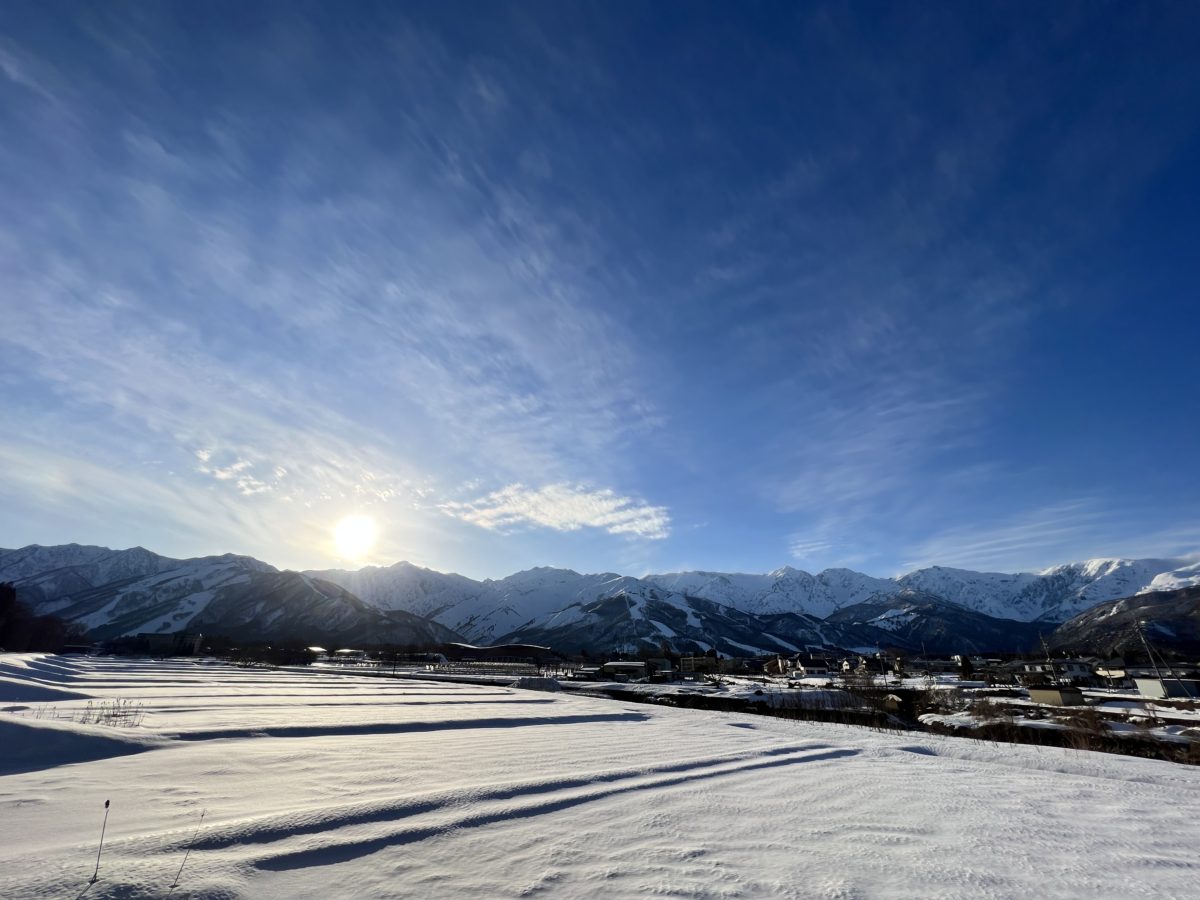The background of the study session
On June 9th, a study session on carbon neutrality at Hakuba Valley Ski Resort was held in Hakuba Goryu. The purpose of this gathering was to share examples of what is progressing in the area, specific methods for introducing renewable energy, and an understanding of the current state of energy use in response to medium- and long-term goals set based on the Hakuba Valley SDGs vision. .
Hakuba Valley Vision and Goals https://sdgs.hakubavalley.com/about/vision/
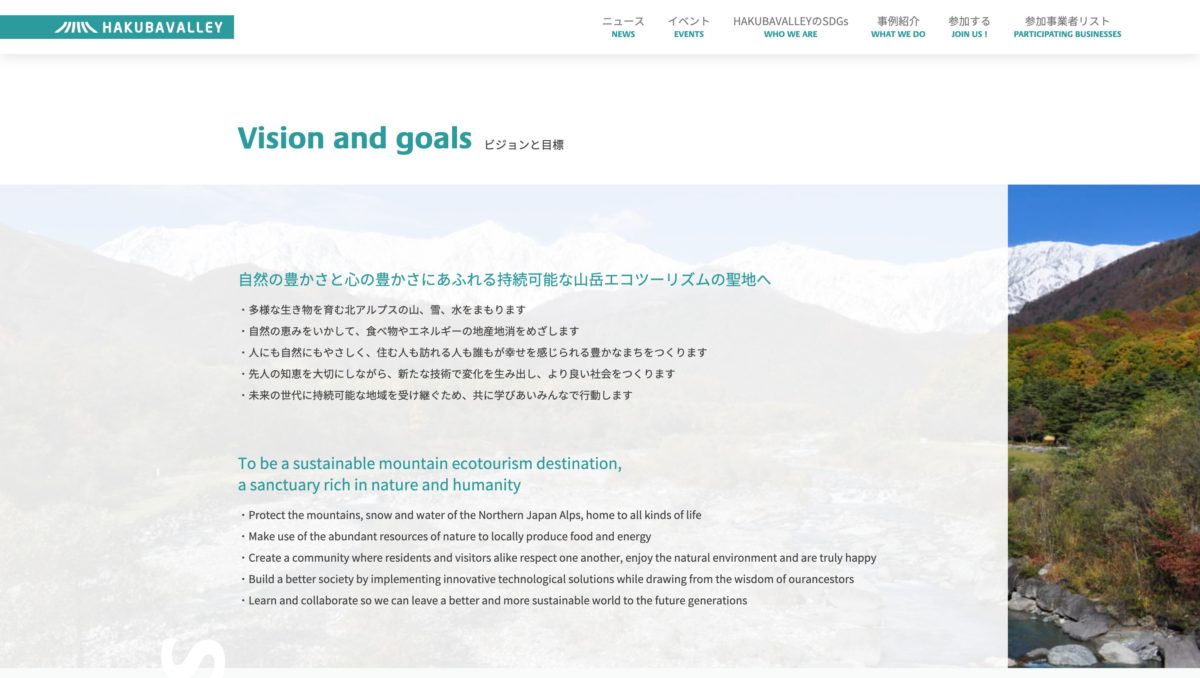
All ski resorts in the area are switching to renewable energy by 2025
- From Hakuba Valley medium-term goals
Hakuba Valley made this SDGs declaration in October 2020.
Around that time, it was predicted that the number of visitors would decrease due to the effects of the new coronavirus, and business was facing a difficult period. However, the reason behind Hakuba Valley's mid-term goal at such a time was the support of POW's support signature, which delivered 14,500 messages from skaters (POW JAPAN Hakuba Valley 100% Natural Energy Supporting Signature Article ) That's a big deal.
Currently, the number of visitors is returning to pre-coronavirus levels, and many skiers from overseas will visit Hakuba Valley in the 2023 season, and the situation is starting to turn around for the better.
However, if we look at the natural environment surrounding ski resorts, we can see obvious changes, such as no snow even into December, rainfall during the high season at high altitudes, and a trend toward less snow in the spring. Everyone at the scene felt it. Something has to change. There are only two years left until the mid-term goal of shifting to renewable energy in 2025.
At such a timing, Hakuba Valley took the initiative and this study session was held.
Summaries of topics covered over the two hours
On the day of the event, the staff of each ski resort gathered at Escal Plaza in Hakuba Goryu and a study session started. Broadly divided, three topics were taken up, and concrete plans that could be implemented immediately were introduced. Let me give you a brief introduction.
1) POW JAPAN Theme: Current Status of Climate Change
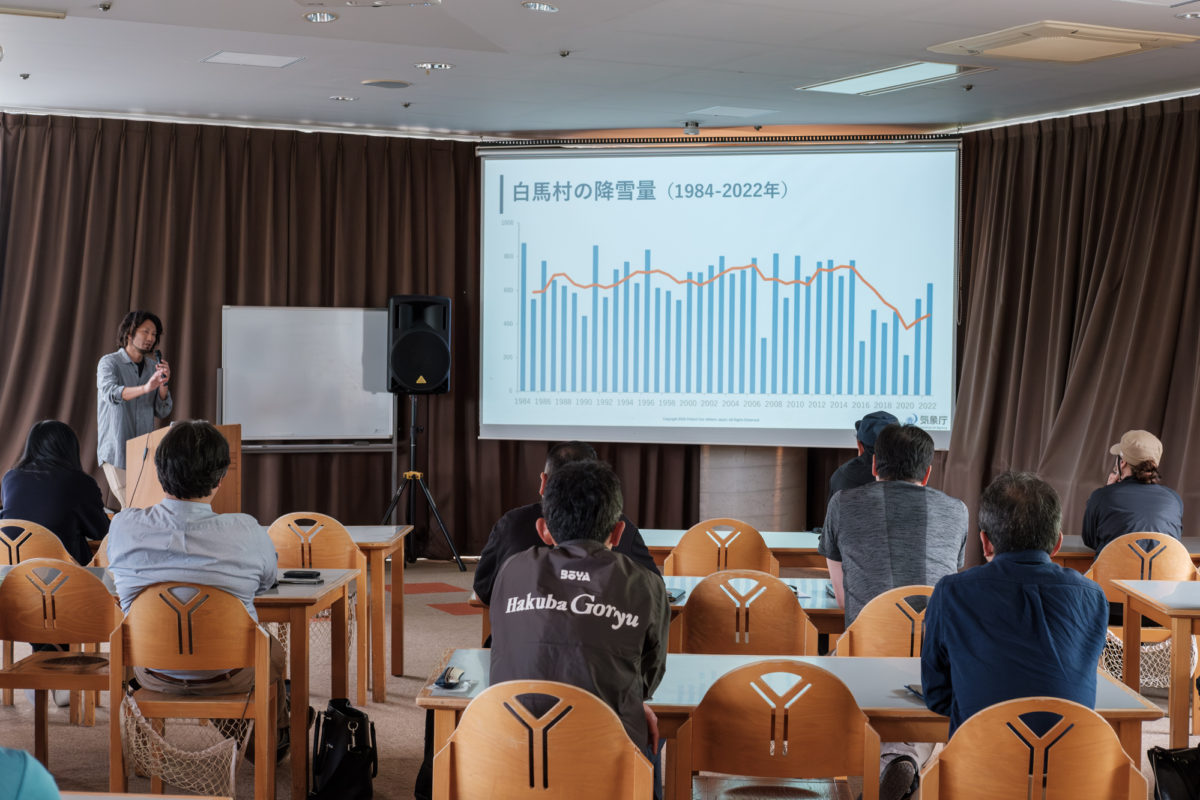
- Current Situation: Climate Change, Increased Greenhouse Gases, and How They Work
- Future predictions: Future predictions of snow cover and snowfall, trends in snowfall in Hakuba Village, impact of future skiing days
- Relationship between Energy, Electricity and Climate Change: Efforts to Reduce CO2 Efforts and Overseas Ski Resort Efforts
- Examples of overseas initiatives
*I would like to read articles in STEEP as well ⇒ What are the SDGs/sustainability that the world's most advanced outdoor resorts are working on? Vail Resort (Vail Resort, USA) https://steep.jp/topics/63602/
*POW JAPAN https://protectourwinters.jp/
2) Renewable Energy Shinshu Net Theme: Options for Renewable Energy Introduction
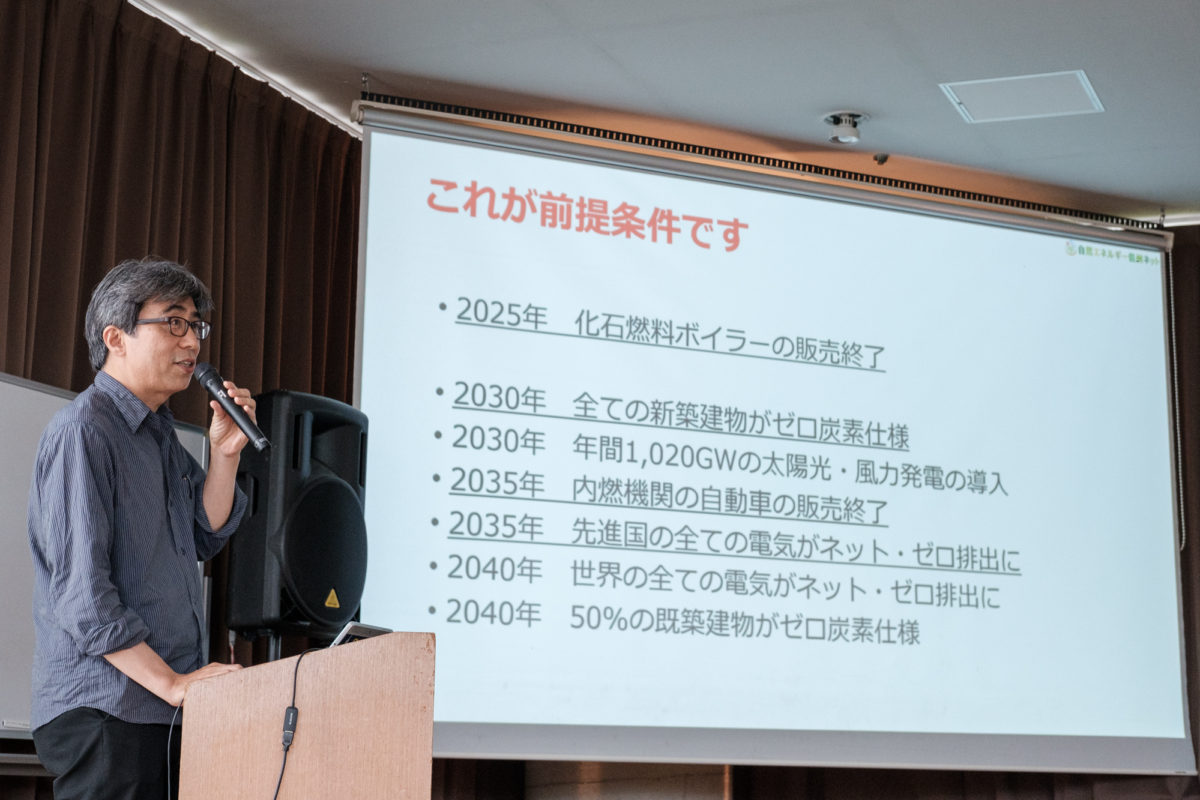
- Goals to be achieved by 2050 issued by the International Energy Agency
- Points for converting the area to renewable energy
- Potential of Renewable Energy in Hakuba Village
- Issues and subsidies related to renewable energy, mainly the introduction of solar power. About surplus power selling model
- Solar power generation snow measures
* See also the Shizen Energy Shinshu Net website, which mainly covers information on natural energy in Nagano Prefecture. https://www.shin-ene.net/
*For examples of solar power generation in the snow country, see the Sunlight Life Research Institute
3) Example of incorporating carbon neutrality at Hakuba Valley ski resort Case of Happo-one development
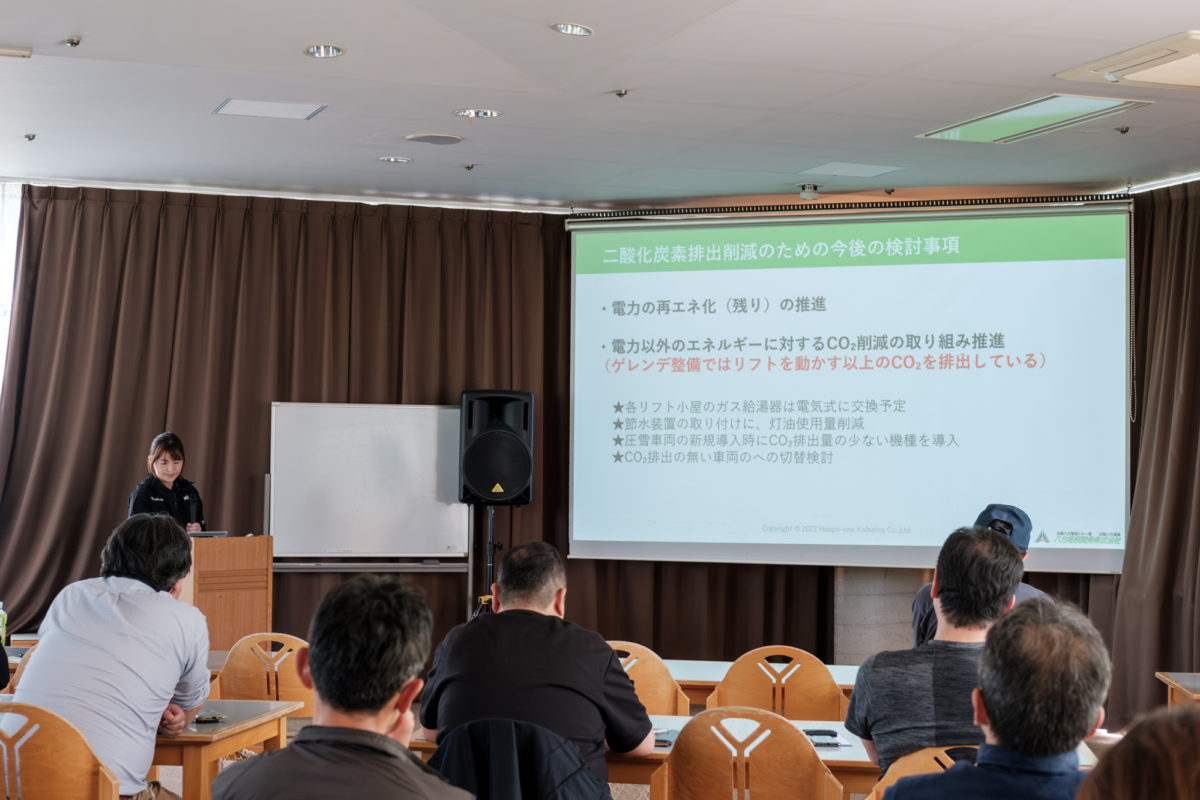
- Establishment and Background of the SDGs Marketing Department
- Current status of carbon dioxide emissions from Happo-one development
- Status of switching to renewable energy
- Future considerations and current work
- the result
*Efforts are also being picked up within STEEP. “Launching the first SDGs marketing department at a Japanese ski resort! ~Hakuba Happo-one development’s passionate efforts toward SDGs” https://steep.jp/interview/51181/
4) Example of incorporating carbon neutrality at Hakuba Valley ski resort Case of Japanese ski resort development
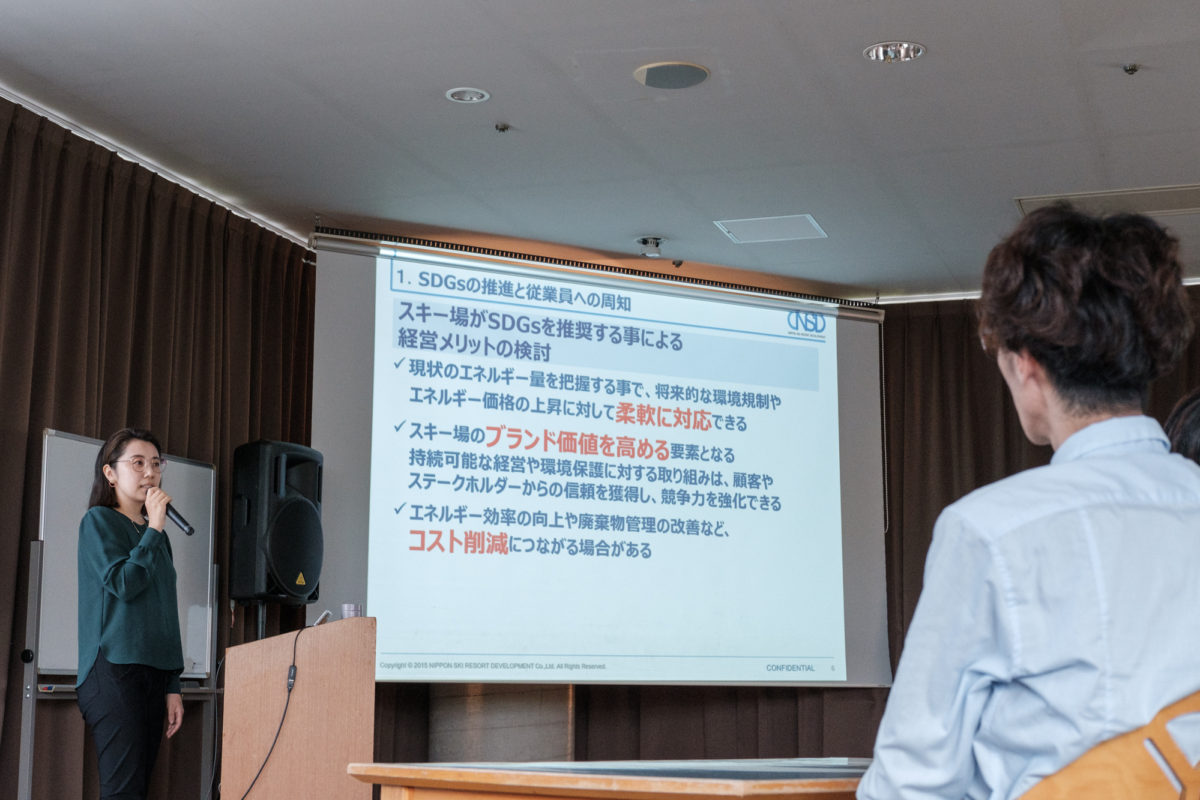
- Background of SDGs Initiatives and Dissemination to Employees
- Ascertaining power consumption and joint purchase of power
- Examination of carbon neutrality
- steps forward
*Nippon Ski Resort Development https://www.nippon-ski.jp/csr.php
It is meaningful to know the current situation and share it
About 30 ski resort staff continued to input for about 2 hours.
We grasped the current situation of climate change, acquired knowledge about the types of renewable energy and steps to introduce them, and learned about precedent cases of active efforts in the region. Finally, the "CO2 emissions calculation sheet" was shared. This system automatically calculates CO2 emissions by recording the amount of electricity and fuel (gasoline for snow groomers, kerosene for heaters, etc.) used by the facility. Calculations can be made for each facility, making it an ideal starting point for learning about the current situation.
In 2019, the "Climate Change & Regional Economy Symposium" held by POW JAPAN triggered the Hakuba Valley to take clear action to introduce renewable energy throughout the region. Taking into account the current situation and efforts of each ski resort, it will also be important for Hakuba Valley to take the lead in coordinating this process in order to move forward with this progress throughout the region. I would like to conclude with the words of Chairman Takanashi of the Hakuba Valley Cableway Operator Promotion Board.
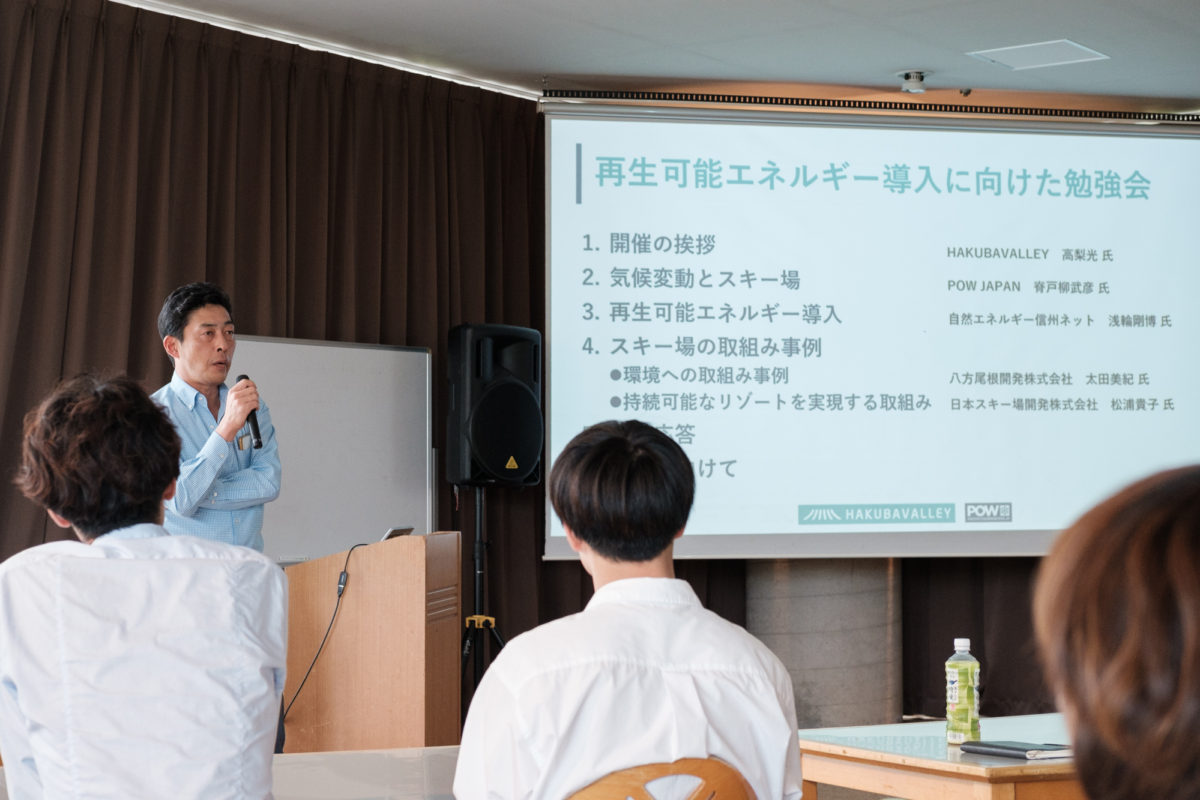
``This study session was the first of its kind in Hakuba Valley.Currently, it is undeniable that each ski resort has its own temperature.It is important for everyone to share this understanding.Renewable Energy Since there are many things we don't understand when dealing with CO2 emissions, it is important to start by learning things, such as using a CO2 emissions calculation sheet.Once you know the current figures, you can figure out how to proceed with countermeasures.Future In other words, by summarizing the emissions of each ski resort and calculating the total CO2 emissions for the entire Hakuba Valley, we can consider measures from a broader perspective.In that sense, this study session is significant, and we hope to continue it in the future. I want to go.”
■Hakuba Valley SDGs homepage https://sdgs.hakubavalley.com/
Photo/POW JAPAN (Chisato Sasada)

